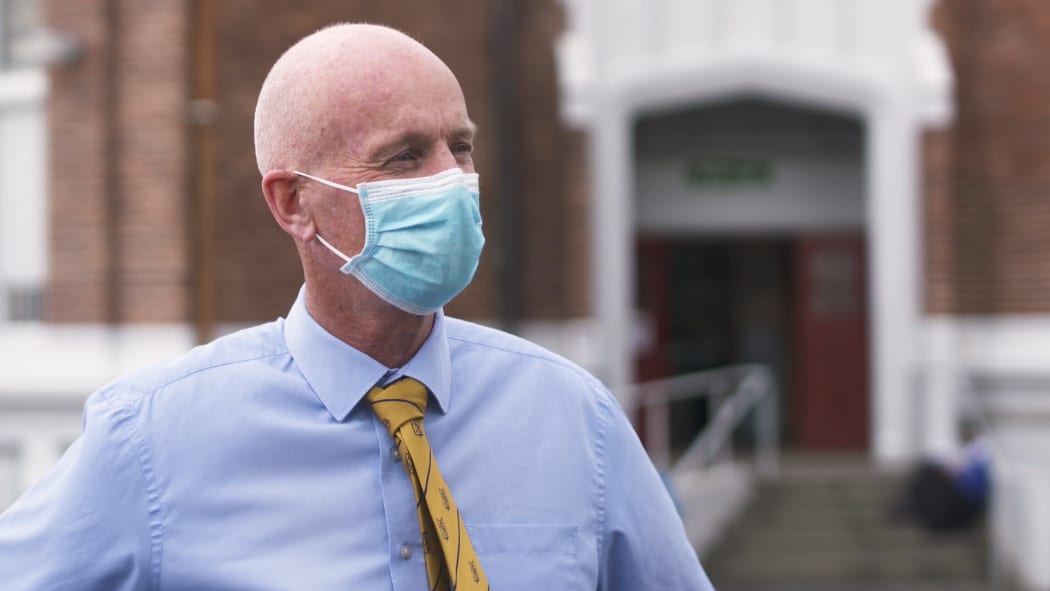Fed up with students not turning up, an Auckland college has hired attendance navigators and taken out radio ads to try get kids into the classroom.
New PPTA numbers show 60,000 students are missing at least three days of school every fortnight and nearly 40 percent of students are not attending regularly.
The government has announced $88 million in funding to try and tackle what some are calling a truancy crisis.
But Ōtāhuhu College's principal said the funding alone was not enough, and some of his school's previous pleas for help have fallen on deaf ears.
On a regular Thursday morning at Ōtāhuhu College, some students stop for a snack at a nearby dairy, others share a joke with mates before heading through the school gates.
To the naked eye, turnout looks pretty good, but principal Neil Watson is under no illusions. Frankly, it could be better.
"It's a lot of kids, and I think your boss would be pretty annoyed if you only turned up Monday to Thursday for your job, and that’s what 80 percent is," he told Checkpoint.
"This has a huge impact, when you have a number of students away from your class, because how do you progress for those who are there?"
It was probably the major educational issue in New Zealand right now, Watson said, spanning all demographics and locations.
Now, Ōtāhuhu College is digging into its own coffers.
"We've employed two, fulltime, what we call attendance navigators, to work with our families and support them getting their children back to school," Watson said.
"So, effectively, we're probably spending about $120,000 or more a year on those two positions and they're working hard to get the students back.
"But it is a challenge."
Ōtāhuhu College has resorted to taking out advertisements with local media as well.

Neil Watson Photo: RNZ / Nick Monro
"We tried to get the Ministry of Education to do something about attendance four or five years ago and they said they would get back to us, so we're looking forward to that response," Watson said.
"In the meantime, in space of about 30 minutes, we phoned up the Pacific Media Network (PMN) and they put some ads together around attendance and the importance of coming to school."
Ministry of Education operations and integration leader Sean Teddy told Checkpoint the ministry’s Pacific advisers had also appeared on PMN and Radio Samoa to share messaging around attendance and engagement.
Head boy Tofi Seiuli said the Covid-19 hangover was still showing.
"Families ... believe the Covid really isn't safe, like school isn’t safe and the Covid’s still out there so they want to keep their kids back," he said.
Meanwhile, other students say their peers are working instead of studying to help support family.
"I think some families are struggling eh, so the kids have to work in order to provide for their families if their parents can’t work," one student said.
Another joked sleeping schedules were to blame.
"Or like being worried to get sick, probably scared to catch it and make their parents lose their jobs."
At Jean Batten School a parent said he remained worried about Covid-19, but had to keep his kids at school so he could work.
But Principal Mardi Leonard said some families were staying away.
"We have actually tried to work on getting our children back, and we've made individual phone calls to a long list of people, and most parents have appreciated the, you know, a little bit of a wake-up call," she said.
"But the statistics show at the moment, across New Zealand, that it is a problem we're facing and it's an urgent problem."
At the beginning of the year attendance was at 20 to 30 percent, before rocketing into the 80s.
People were quick to blame lazy parents, but Leonard reckoned there was more to it than that.
"That really saddens me actually, to hear people talk like that," she said.
"For some families they have actually moved out of the district, and they've had to go and live with other family members in order to financially survive."
Wellington is now digging into its pockets, with Minister of Education Chris Hipkins announcing $88 million for local education needs.
While that was welcome, Watson said he believed priorities were out of kilter, with a similar amount - $86m - also announced to help people get a driver's licence.
"I think everybody watching and listening will know that people want their driver's license, and that's a reasonably straightforward issue to deal with," he said.
"Addressing a long history of truancy and absence from school is a lot more complex issue, and it needs to be funded significantly to improve the outcomes for our young people."
Teddy told Checkpoint Ōtāhuhu College was supported by the South Auckland Attendance Service, which offered "community-based solutions to chronic attendance issues, including engagement workers in schools who are accountable to school leaders".
The Ministry of Education provided another $50m in funding last year to support learners affected by the Covid-19 lockdowns, he said.
"This funding addressed urgent needs in over 3,300 schools, kura and early learning services me ngā kōhanga reo and was focused on improving attendance and engagement."
The problem required the involvement of schools, parents and whānau, iwi and hapū, communities and other agencies to address them, he said.
"This includes cross-agency responses, including the role of MSD Community Connectors, to support students and whānau who face a range of barriers which often fall out of the school’s agency to address."
Meanwhile, Watson told Checkpoint he believed it may be time to look abroad for solutions.
"Chicago has a 95 percent attendance rate," he pointed out.
"It has snow in Chicago, it has slightly more gun violence in Chicago, yet it has a 95 percent attendance rate."
He suggested targets could be necessary and that there should be a requirement come to class.


